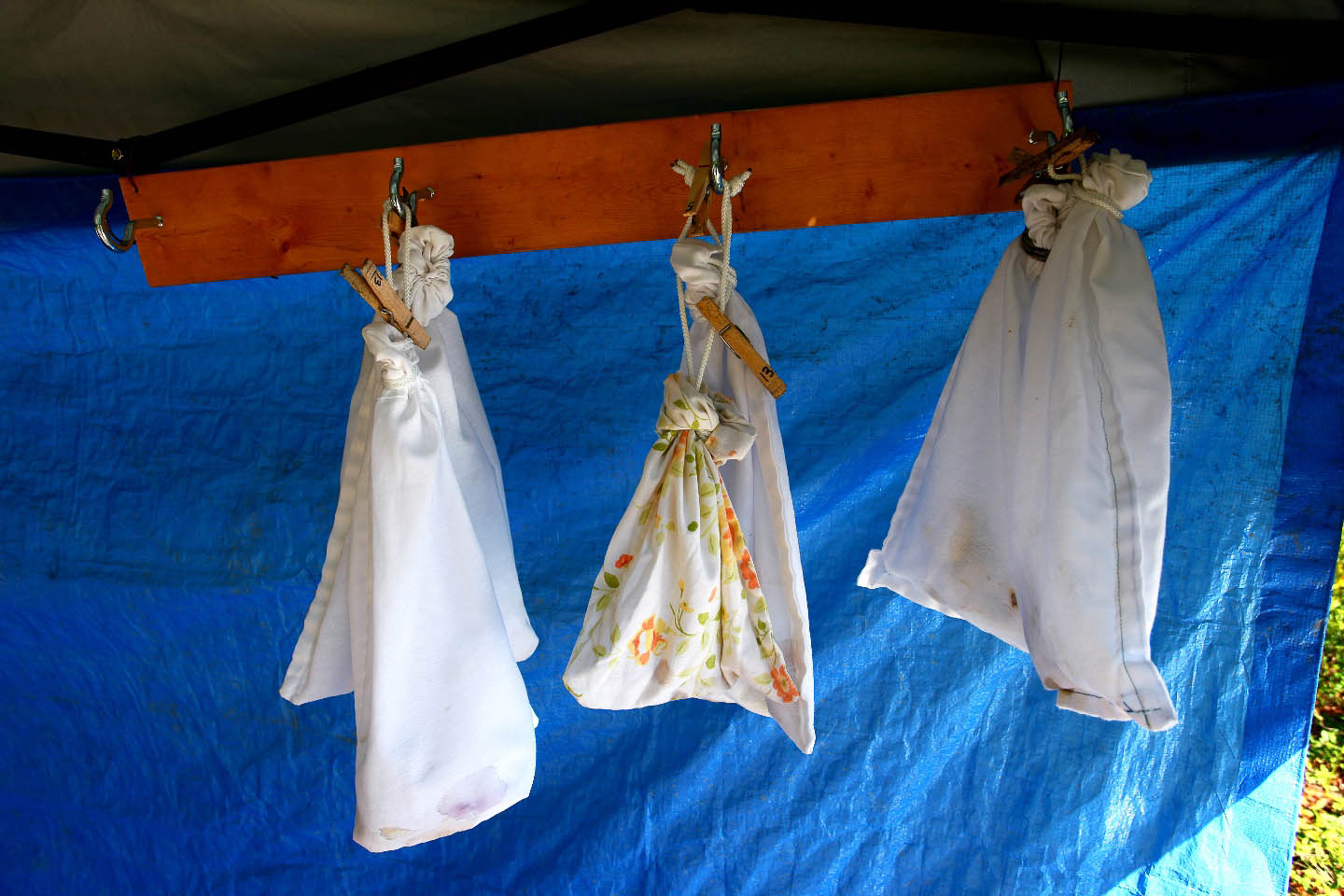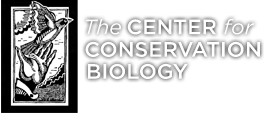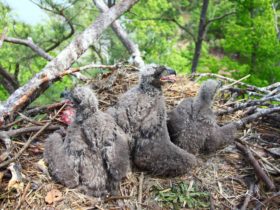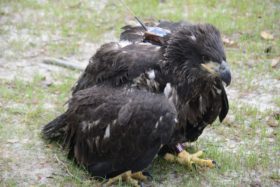Azalea Moves a Bit North
Eagle economics & the social burden of conservation success
September 2, 2009
Investigation of shrubland migrants on the Eastern Shore of Virginia NWR
September 3, 2009
Azalea has been getting a lot of flying time in the past fews days. On Monday Aug 31 she left the area around Blackwells and flew north of Burgess and Edwardsville to Hull Creek where she spent the night. She was very active on Tuesday Sept 1 as she flew back to the Wicomico River near Blackwells, then west almost to Howland on the Wicomico, then back north to Hull Creek and spent the night. On Wednesday Sept 2 she spent the day exploring both sides of Hull Creek near the Potomac River, and at 6:00pm was in a small patch of woods just off Candy Point Rd on the east side of Hull Creek.
Azalea may be hanging around here in Northumberland County because she has the company of other bald eagles. That we don’t know for certain. However, there are 16 active bald eagle nests in Northumberland County. You can see where these nests are located in relation to where Azalea has been since August 22 by going to www.ccb-wm.org/virginiaeagles/ and click on Nest Locator, then enter Northumberland County.




8 Comments
Reese, Thanks so much for the updates. I don’t think we will ever tire of seeing where Azalea is! I’m wondering how many bald eagles have purple bands? I’m wondering what the liklihood is of it being one of our three if a purple band is spotted but not read. Thanks.
busy girl! thanks for the info
Thanks for the update! Does she need to be around other bald eagles for socialization? Is there any type of socializing between eagles or do they generally avoid each other until nesting time?
Reese – thanks so much for keeping us informed about our girl. I look for the updates every day. Godspeed, Azalea! We miss you.
Thank you so much for keeping us updated on Azalea’s movements. Since we’ve watched her grow up, we have become very attached to “our girl”. Let’s hope the transmitter on her keeps functioning and we can track her adventures.
Purple Bands – CCB has been placing purple leg bands on bald eagles in Virginia and Maryland for two years. There are about 150 eagles wearing these bracelets.
Eagle Socializing – I’m not quite sure eagles socialize so much as they are just more tolerant of each other, especially when food is abundant. These abundant food areas are known for their concentration of bald eagles, sometimes exceeding 100 birds. During breeding season, in Virginia that is late fall and winter, they are very protective of their breeding territory and not tolerant of each other at all.
I can’t imagine seeing 100 eagles. The most I’ve seen were 10 sitting in the trees along the York River early in the morning looking for breakfast.
Thank you for keeping us updated Reese. This is going to very interesting over the next three years….are you ready for that task? lol